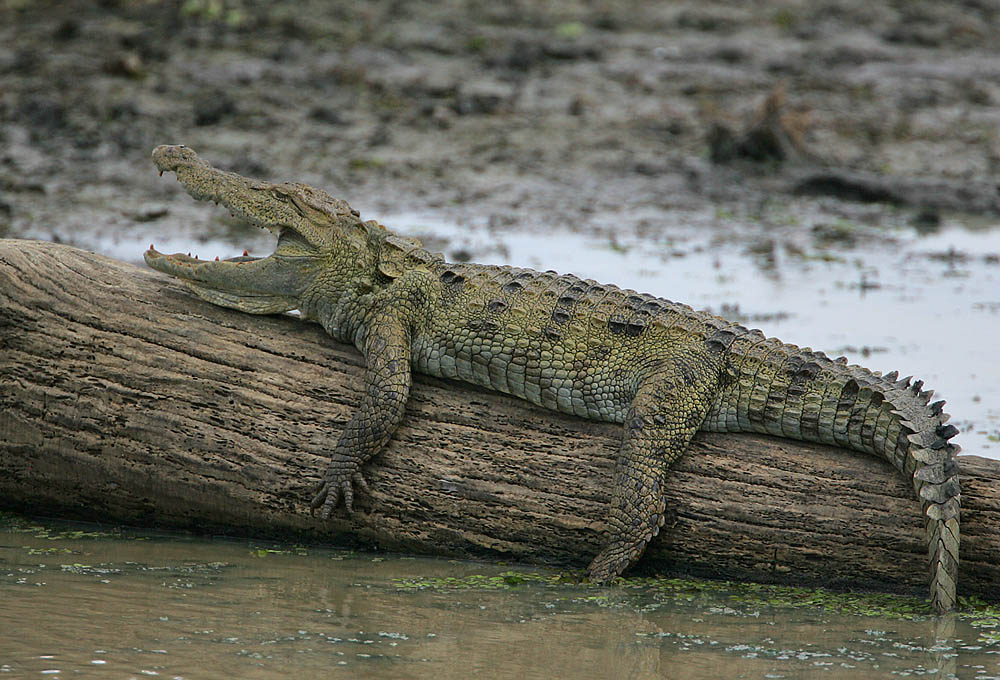Crocodylus palaeindicus on:
[Wikipedia]
[Google]
[Amazon]
''Crocodylus palaeindicus'' is an extinct species of
 Historically, ''C. palaeindicus'' was considered a direct ancestor of the Mugger crocodile ''C. palustris''. The two species are similar in appearance, and some fossils of ''C. palaeindicus'' were at first mistaken for ''C. palustris''. Most modern phylogenetic analyses of crocodiles place ''C. palaeindicus'' in a
Historically, ''C. palaeindicus'' was considered a direct ancestor of the Mugger crocodile ''C. palustris''. The two species are similar in appearance, and some fossils of ''C. palaeindicus'' were at first mistaken for ''C. palustris''. Most modern phylogenetic analyses of crocodiles place ''C. palaeindicus'' in a
crocodile
Crocodiles (family (biology), family Crocodylidae) or true crocodiles are large semiaquatic reptiles that live throughout the tropics in Africa, Asia, the Americas and Australia. The term crocodile is sometimes used even more loosely to inclu ...
from southern Asia. ''C. palaeindicus'' lived from the Miocene to the Pliocene. It may be an ancestor of the living Mugger crocodile.
History
''C. palaeindicus'' was first named by Scottish paleontologist Hugh Falconer in 1859. Falconer found fossils of the species in the Siwalik Hills of India along with the remains of many other animals like turtles, ostriches,camel
A camel (from: la, camelus and grc-gre, κάμηλος (''kamēlos'') from Hebrew or Phoenician: גָמָל ''gāmāl''.) is an even-toed ungulate in the genus ''Camelus'' that bears distinctive fatty deposits known as "humps" on its back. C ...
s, saber-toothed cats, mastodons. Richard Lydekker later named another crocodile from the Siwalik Hills which he called ''C. sivalensis''. Although the two crocodiles are very similar, ''C. sivalensis'' was distinguished from ''C. palaeindicus'' because the margin of its skull was less convex. ''C. sivalensis'' has recently been synonymized with ''C. palaeindicus'', as the slight differences in shape are thought to be from natural variation or from fossilization. In later years, fossils were also found from Pakistan and Myanmar
Myanmar, ; UK pronunciations: US pronunciations incl. . Note: Wikipedia's IPA conventions require indicating /r/ even in British English although only some British English speakers pronounce r at the end of syllables. As John C. Wells, Joh ...
.
Classification
 Historically, ''C. palaeindicus'' was considered a direct ancestor of the Mugger crocodile ''C. palustris''. The two species are similar in appearance, and some fossils of ''C. palaeindicus'' were at first mistaken for ''C. palustris''. Most modern phylogenetic analyses of crocodiles place ''C. palaeindicus'' in a
Historically, ''C. palaeindicus'' was considered a direct ancestor of the Mugger crocodile ''C. palustris''. The two species are similar in appearance, and some fossils of ''C. palaeindicus'' were at first mistaken for ''C. palustris''. Most modern phylogenetic analyses of crocodiles place ''C. palaeindicus'' in a basal
Basal or basilar is a term meaning ''base'', ''bottom'', or ''minimum''.
Science
* Basal (anatomy), an anatomical term of location for features associated with the base of an organism or structure
* Basal (medicine), a minimal level that is nec ...
position among members of the genus ''Crocodylus''. Below is a cladogram modified from Brochu ''et al.'' (2010) showing the relation of ''C. palaeindicus'' with other crocodiles:
A 2018 tip dating study by Lee & Yates simultaneously using morphological, molecular (DNA sequencing
DNA sequencing is the process of determining the nucleic acid sequence – the order of nucleotides in DNA. It includes any method or technology that is used to determine the order of the four bases: adenine, guanine, cytosine, and thymine. Th ...
), and stratigraphic ( fossil age) data established the inter-relationships within Crocodylidae
Crocodiles (family Crocodylidae) or true crocodiles are large semiaquatic reptiles that live throughout the tropics in Africa, Asia, the Americas and Australia. The term crocodile is sometimes used even more loosely to include all extant mem ...
. In 2021, Hekkala ''et al.'' were able to use paleogenomics, extracting DNA from the extinct '' Voay'', to better establish the relationships within Crocodylidae, including the subfamilies Crocodylinae
Crocodylinae is a subfamily of true crocodiles within the family Crocodylidae, and is the sister taxon to Osteolaeminae ( dwarf crocodiles and slender-snouted crocodiles).
Taxonomy
Crocodylinae was cladistically defined by Christopher Brochu in ...
and Osteolaeminae
Osteolaeminae is a subfamily of true crocodiles within the family Crocodylidae containing the dwarf crocodiles and slender-snouted crocodiles, and is the sister taxon to Crocodylinae.
Taxonomy
Osteolaeminae was named by Christopher Brochu in ...
.
The below cladogram shows the results of the latest study:
References
{{Taxonbar, from=Q5187414 Crocodylidae Miocene crocodylomorphs Miocene reptiles of Asia Pliocene reptiles of Asia Pliocene crocodylomorphs